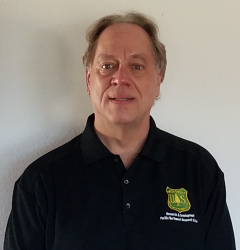Meet a Forester, Paul Anderson
This month, we are pleased to feature Paul Anderson, Station Director for the USDA Forest Service Pacific Northwest Research Station. We invite you to meet Paul!

What was your first position in the field of forestry?
Forestry Technician employed by the White Earth Business Council, White Earth Nation of the Ojibwe in Nay-tah-waush, Minnesota. Under the supervision of a Bureau of Indian Affairs forester, I and a crew partner spent a summer performing an inventory of reservation forests.
How long have you been in your role?
Just over four years – I was recently named permanent Station Director after serving in the role for four years, beginning in March 2017.
What do you enjoy most about being a Western Forestry Leadership Coalition (WFLC) member?
I very much enjoy the combined focus of state and federal leadership. The meetings are extremely valuable as it provides two important forums. First, it brings federal and state agencies together to have meaningful discussion that recognizes the interdependence of resource management in service to the public at large, and it furthers pragmatic application of shared stewardship principles. Second, it has also proven to be an effective forum for bringing together the western Regional Foresters and Research Station leadership to talk about western issues for the Forest Service. WFLC meetings have become my favorite engagement in my role as Station Director.
What do you see to be the emerging issues in your region?
Three important issues both contemporary and emergent include: 1) fire as a more frequent major disturbance factor in west-side, mesic forests that typically have large fuels loads, relatively infrequent but severe fire events and complex ownership patterns with varying objectives and responsibilities that must be coordinated for effective fire mitigation strategies, 2) changing demographics and intent for forest use by the public; COVID-19 brought substantial increase in forest usage, often by persons having little prior experience with public forests, and as a result an intensification of various competing or complementary uses and management costs; and 3) climate change and the interplay between forest management as a climate mitigation strategy via carbon sequestration, fuels and fire risk mitigation, and economic benefit via conventional forest harvest, new wood utilization innovations and a demand for a diverse array of non-timber forest products.
What is your favorite tree?
I often say my favorite forest is the one I am standing in and my favorite tree species is the one I am standing next to. However, in my research career I can point to three species for which I have invested a lot of time in developing a detailed understanding – northern red oak, ponderosa pine and the genus malus (apple). I still spend a lot of field time with ponderosa pine in central Oregon, and on our home property near Philomath, Oregon we have a small orchard of apple trees.